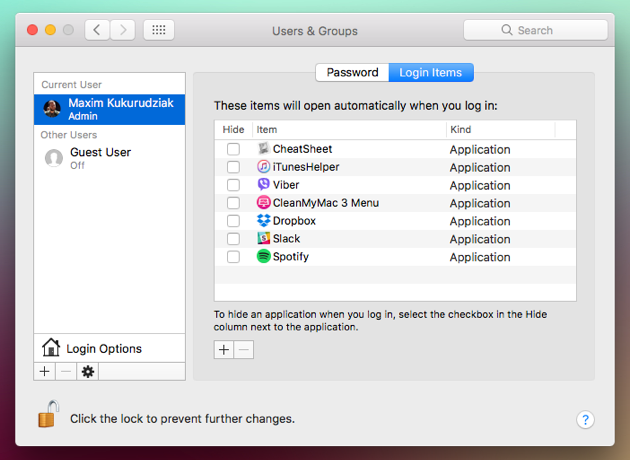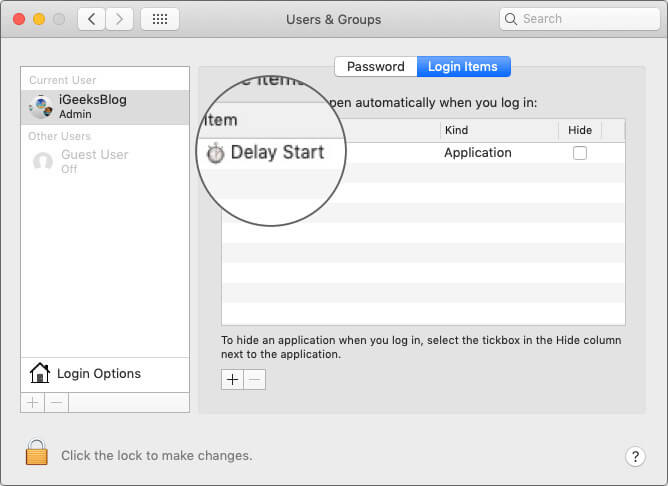
Second, you can quickly set programs to be ready and waiting when you start. We’ll run through how to change the startup apps on your Mac and start your day the right way. The process takes under a minute to complete and if even if you’re using an eight-year-old Mac, our advice should work. Read How to open a Mac app from an unidentified developer to get around this restriction. Once you've installed the app, launch it and you'll be presented with the main screen. That's it: you're.
The Mac interface is generally user-friendly, but at times it could get confusing especially when you multitask and open several windows and launch several applications all at once. But wouldn’t it be convenient if you can see, at a glance, everything that’s running on your computer and be able to switch or close any apps Well, Mac lets you do that. In this article will teach you how to know what apps are open on Mac are simultaneously running on your computer.
Check the Dock
How To Set What Apps Open On Start Mac Os
The first place you have to look at to see which apps are opened is the Dock. If you’ve set your Dock to appear only when moused over, you might have to move your cursor to the bottom of your screen until it appears. If you want to change your Dock settings, you can go to System Preferences > Dock > Automatically Hide or Show the Dock. You can tick this option on or off according to your preferences.
The Dock is the place where you see all opened apps, but take note that it also shows apps that you’ve added on it regardless whether if they’re running or not. You can also locate the documents and files you have minimized on the dock. Commonly used apps like Chrome, iTunes, Photos, App Store, Calendar, Reminders, Safari, and Contacts are usually found in the Dock so they can be easily accessed when needed, but this doesn’t automatically mean that they are running.
How to know what apps are open on Mac? You can see a dot (white or gray, depending on your Mac’s color theme) below the app that is running. To jump to an open app on Mac, click the icon on the Dock, and the app’s window will pop up. Clicking the icon will also launch an app if it is not currently running. To shut down or quit an app directly from the Dock, right-click or Ctrl-click the icon and choose Quit.
Open the Force Quit Applications Menu
If you have an open app on Mac that doesn’t respond, the best way to quit and re-launch the app is through the Force Quit Applications menu. Just press Cmd + Alt + Esc to pull up the Force Quit Applications menu that shows a list of all running apps on your computer, including the unresponsive ones. To force-quit an app, select the app to highlight it and then click Force Quit.
The Force Quit Applications menu only allows you to quit running apps, but you can’t jump to open apps from here. Nevertheless, this menu provides a clearer picture of what apps are running on your Mac compared to a crowded Dock. Here’s a tip – to avoid apps from crashing, eliminate unnecessary apps and clean up your auto start menu with the help of an app like Tweakbit MacRepair.
Check Activity Monitor
The Dock and the Force Quit Applications menu have one thing in common –they both show traditional apps that are running on your computer. But if you want to see everything, you should check your Activity Monitor. To open Activity Monitor, go to Finder > Applications > Utilities > Activity Monitor. The easier way to open it is by doing a Spotlight search.

Not only does it show which apps are currently open – it also lists down all the activities and processes that are running in alphabetical order. However, you can sort out the entries by processor load, memory usage, energy impact, disk access, or network by clicking the column headers at the top. To quit an app or process, highlight it on the list and click Quit Process or click Inspect to know more information.
These three methods make it easier for Mac users to know which apps and processes are currently running, jump from one open app to another, and to quit apps that are not responding or are no longer needed.
See more information about Outbyte and uninstall instructions. Please review EULA and Privacy Policy.
Everyone who uses computers daily develops a set pattern. They switch on their PCs, start their respective programs, and wait while they open up. What if you don’t have to start these apps manually, and they automatically launch when you login? Sounds great, right!! So let me tell you how to set applications to launch automatically on Mac startup.
How to Set Applications to Launch Automatically on Mac Startup
How To Open Applications Mac
The best part about automatically launching your most used applications is the time and effort saved in the process. Moreover, it is super simple to enable or disable. Along with some methods to automize your apps, I have also included some tips on managing them properly.
So make sure that you scroll all the way down. And while you are there, don’t forget to send us some love in the comment section below.
Quick Access:
How to Launch Applications on Mac Startup From the Dock
Step #1. Launch the app you want to launch automatically on Mac Startup. (Skip the step if the app is already in your Dock)
Step #2. Use secondary click (two-finger tap) or right-click to access the app’s options.
Step #3. Select Options from the listing and click on Open at Login.
That’s it!! From now onwards, the applications will launch automatically on Mac startup. While quite a simple process, it can be difficult to add multiple apps individually. Don’t worry our next solution will resolve the issue in a jiffy.
How to Add Apps to Open at Mac Startup
Step #1. Click on Apple () icon and select System Preferences from the menu.
Step #2. Select Users & Groups.
Step #3. Here, switch to the Login Items tab from the top bar.
Step #4. Click Plus(+) from the bottom of the page.
Step #5. Select the app or press Command(⌘) key to select multiple apps from the window and click on Add.
You can also add a document, folder, server, or other items to the startup list. Just go to their location, select them, and click on Add.
Using Third-Party Apps to Open Applications at Mac Startup
Is there an app for this as well?? Of course, nowadays, there’s an app for anything. My suggestion is to use CleanMyMac X, an easy to use, efficient, and useful app.
The benefit of downloading such all-inclusive Mac cleaner apps is the whole array of intriguing features they offer. Whether it is deleting duplicate files or safe uninstaller, these apps enable you to optimize your usage as much as possible.
How To Set What Apps Open On Start Mac Safe Mode
How to Manage Apps at Startup on Mac
While it is fun to have all your apps opened for you, this may significantly delay your log-in process. In short, use this feature wisely and moderately, or this will be more of a hindrance. Here are a few features that will make managing apps at startup simpler.
Hide Login Items at System Startup on Mac
If you want an item to launch at startup, but not to pop-up on the screen. The app/folder/document hides and runs in the background, ready for whenever you need it.
For instance, apps like Photoshop or CorelDRAW can be prepped in the background while you check your mails or do some errands.
Step #1. Click on Apple () icon → System Preferences → Users & Groups → Login Items.
Step #2. Add the app in the listing and tick the Hide box next to it.
Note: This feature is not applicable for servers, they will always appear in the Finder after login.
Temporarily Disable Startup Apps on Mac
Open Iphone Apps On Mac
There might be days when you don’t have time to enable your computer’s normal boot process. Thankfully you can temporarily stop them from launching when you log in.
Start your laptop as per usual. Type in your log-in password, press and hold the Shift key before hitting enter. Release the shift key once you see the Dock. The startup apps will not load this time, though they will behave normally otherwise.
Delay Startup Apps on Mac Startup
A very simple and basic app dubbed as Delay Start lends you an exciting way to manage startup apps. Instead of temporarily stopping auto-launch apps, it starts to fasten the log-in process.

How To Set What Apps Open On Start Macbook Pro
Just stop all apps from launching automatically and add just Delay Start in the list. Now open Delay Start and add the apps you want to launch automatically. Set the launch timing from the Time Setting section and close the app.
Next time when you log-in, the Delay Start app will run automatically. And after the set time limit, all the apps added to it will start simultaneously. Though, the developer calls it an over-engineered app, in my opinion it surely makes the login process faster.
I love automation. Do you?
For quite some time, I have been using this feature to ease off my morning rituals. I start my Mac and leave the room for my tea. By the time I am back at my seat, my Slack, Safari, and Mail apps are alive and waiting for my attention. This gives me some precious time to relax and center myself for the day ahead.
How To Set What Apps Open On Start Mac Pro
If you pride yourself as a multitasker such as I, here are my favorite tips and tricks:
Suraj is a digital marketing expert on the iGB's team. He contributes to the social media section along with tips and tricks for iPhone, Apple Watch. Apart from blogging, he likes to work out as much as he can in his gym and love to listening to retro music.
How To Set Applications To Open On Startup Mac
- https://www.igeeksblog.com/author/padmasuraj/How to Save Your Kids from their Digital Exposure ?
- https://www.igeeksblog.com/author/padmasuraj/How to Add Filter to Video on iPhone and iPad in iOS 13
- https://www.igeeksblog.com/author/padmasuraj/How to Manage Downloads in Safari on iPhone and iPad in iOS 13
- https://www.igeeksblog.com/author/padmasuraj/How to Use External Hard Drives with iPad and iPhone in iOS 13